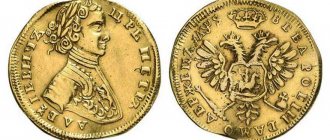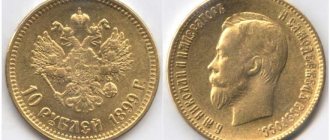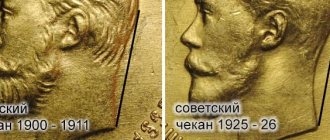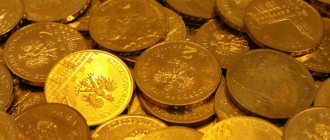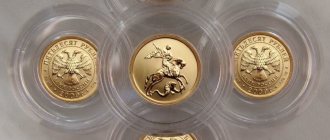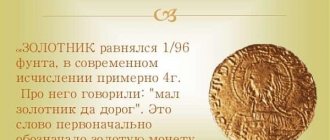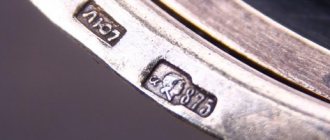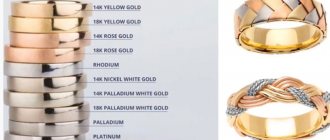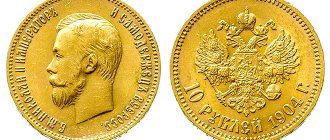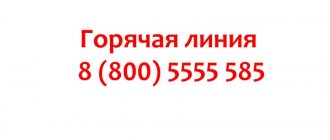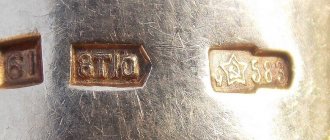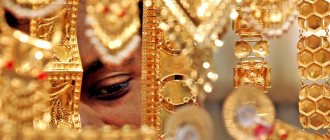In Russian numismatic terms, chervonets refers to a specific type of gold coin, whereas in colloquial speech this name often accompanied any large-sized gold coin. Initially, it was only about foreign coins made of high-grade (“red”) gold. The earliest example of domestic coinage dates back to the reign of Ivan the Third. In different eras, the market value of a chervonets reached three and a half rubles in silver. Under Peter the Great, the chervonets was a 980 gold coin weighing 3.47 grams. In 1718, it was replaced by the gold two-ruble note (781 samples weighing 4.1 grams). Chervonets were also minted under subsequent rulers. Their obverse was always decorated with the face of the emperor or empress. But then the revolution happened, and a peasant suddenly appeared on a gold coin during the sowing season.
Golden chervonets “Sower”
To get an idea of the reasons for the appearance of chervonets in the country of the Soviets, one should go back to the pre-revolutionary era. Since 1897, Nicholas II issued gold coins of 900 standard (15 and 7.5 rubles were minted only in the first year of the period of gold monometallism). The first gold tens of this type appeared in 1898 and did not yet bear the nickname “chervonets”. There was at least 7.74 grams of pure metal in ten. Coins were not only used in calculations, but also served as an excellent store of value.
After the revolution, the Council of People's Commissars faced the urgent task of stabilizing the financial system, destroyed by the civil war. “Our economic and financial policy is decisively oriented towards the restoration of the gold backing of money,” read the resolution of the 11th Congress of the RCP (b). The name of the monetary unit was chosen from “hryvnia”, “chervonets” and “rubles”. In colloquial speech, the word “rubles” meant a silver ruble, and “hryvnia” was the recent monetary unit of the UPR that ceased to exist. Of the three possible options, there was only one left.
There has been no talk about minting gold coins yet. The State Bank received the right to issue banknotes in gold terms. The largest was 25 chervonets, which was equivalent to 193.5 grams of precious metal. Now the money turnover of the RSFSR was supported not only by Sovznaki, but also by a new currency backed by gold.
"Historical" series
On September 13, 1988, the first issue of coins made of precious metals of the Historical Series “ 1000th anniversary of ancient Russian coinage, literature, architecture, baptism ” was released. Their reverses reflect the era of Kievan Rus of the 10th–11th centuries, depicted in architectural monuments, ancient Russian literature, and the first coins of Vladimir Svyatoslavovich.
Gold, silver, platinum and, for the first time, palladium were used to make coins in this series.
The coin of this series of 50 rubles from 1988 “St. Sophia Cathedral in Novgorod” was minted on the MMD with a circulation of 25,000 pieces as proof.
The coin is made of 900-carat gold, the weight of pure metal is 7.78 grams, the diameter is 22.6 mm.
100 rubles of 1988 “Zlatnik of Vladimir” were minted on MMD with a circulation of 14,000 pieces as proof.
The coin is made of 900-carat gold, the weight of pure metal is 15.55 grams, the diameter is 30 mm.
Subsequent issues of the Historical Series were dedicated to the eras of Ivan III, Alexander Nevsky, Dmitry Donskoy, Peter I, Catherine II, and other historical periods of Russia.
On August 31, 1989, the series “500th anniversary of the unified Russian state” , published until 1991. It included six commemorative gold coins.
coin of 1989 “Assumption Cathedral in Moscow” was minted on the MMD with a circulation of 25,000 pieces as proof.
The denomination coin is made of 900-carat gold, the weight of pure metal is 7.78 grams, the diameter is 22.6 mm.
100 rubles of 1989 “State Seal of Ivan III” were minted on the MMD with a circulation of 14,000 pieces as proof.
The coin is made of 900-carat gold, the weight of pure metal is 15.55 grams, the diameter is 30 mm.
coin of 1990 “Monument to Peter I in St. Petersburg” was minted on the MMD with a circulation of 14,000 pieces as proof.
The coin is made of 900-carat gold, the weight of pure metal is 15.55 grams, the diameter is 30 mm.
50 rubles 1990 “Church of the Archangel Gabriel in Moscow” were minted on MMD with a circulation of 25,000 pieces as proof.
The coin is made of 900-carat gold, the weight of pure metal is 7.78 grams, the diameter is 22.6 mm.
100 rubles 1991 “L.N. Tolstoy (1828-1910) – Russian writer” were minted on MMD with a circulation of 14,000 pieces as proof.
The coin is made of 900-carat gold, the weight of pure metal is 15.55 grams, the diameter is 30 mm.
50 rubles 1991 “St. Isaac’s Cathedral in St. Petersburg” - minted on MMD with a circulation of 25,000 pieces as proof.
The coin is made of 900-carat gold, the weight of pure metal is 7.78 grams, the diameter is 22.6 mm.
It was planned to sell 10% of the Historical Series circulation in the USSR for rubles. For gold coins with a face value of 50 rubles, the price was set at 710 rubles.
Chervonets “Sower” 1923
It turned out that the tsarist gold tens still enjoy great trust among the population, who prefer to keep their savings not in banknotes that were compromised during the Civil War, but in metal. Therefore, after the first issue of paper chervonets, a decision was made to provide their coin counterpart. The royal ten was taken as a basis (900 standard, 7.74 grams of pure metal). The obverse bears the coat of arms of the RSFSR. Through the efforts of the medalist of the Petrograd Mint A.F. Vasyutinsky, the reverse was decorated with the image of a peasant sower.
The model for the bas-relief was the famous bust sculpture of I.D. Shadra “The Sower” (Tretyakov Gallery). Shadr’s work turned out to be closely connected with the life of the Soviet country. The compositions “Peasant”, “Red Army Soldier”, “Worker” were used in the design of standard issues of postage stamps. And based on the famous “Girl with an Oar,” they immediately imagine the park sculpture of the USSR of the pre-war period.
The first gold chervonets came out from the stamp pair on August 27, 1923. For the period 1923-1924. According to documents, the Petrograd Mint issued 2,751,300 coins. Other sources indicate that only 100,000 copies of the Sowers were minted. The confusion is due to the fact that most of the circulation was subsequently melted down to produce analogues of the five- and ten-ruble coins of Nicholas II . Since, along with the “Sowers,” gold coins from the tsarist era continued to circulate in the domestic market, dozens of Nicholas II also began to be called “chervonets.”
The transition to issuing banknotes no longer from the RSFSR, but from the USSR, raised the question of changing the coat of arms on the obverse. There are samples with the date “1925” and the coat of arms of the USSR. None of the five known examples are present on the numismatic market. Two copies are kept in the Pushkin Museum. Three more coins are on display at the Goznak Museum. Since the main purpose of the gold issue was international settlements, and not domestic turnover, the need for the issue disappeared. The means of payment have changed in the world market. Now gold bullion and stable currencies (US dollar, British pound sterling and Swiss franc) dominated there.
Sculpture by Ivan Shadr “The Sower”
What was the history of the creation of Shadr’s sculpture “The Sower”? The search for a suitable colorful nature led the master to the Urals, to the village of Prygovaya, Shadrinsky district, which once gave Ivan Ivanov the creative pseudonym “Shadr”. A lot of time passed before the sculptor was lucky enough to meet a strong man with a beard, Perfiliy Petrovich Kalganov, who agreed to pose for the bust of “The Sower.” Ivan Dmitrievich sculpted the waist part of a peasant with a basket from another peasant, Kiprian Kirillovich Avdeev.
Many specialist researchers highly appreciated the monumental sculpture of Shadr. “The Sower” is “a whole symbol of the entire sowing peasantry,” filled with spiritual strength, a hidden mind and an unbending will.
Nowadays, the most famous sculptures of Shadr are exhibited in the Tretyakov Gallery. Many of these works served as models for various artists to sketch for banknotes and postage stamps. And Ivan Shadr himself created sketches of not only Soviet banknotes, but also postage stamps for the 2nd Moscow Goznak factory. Wanting to make the figures with which he planned to decorate the money and stamps especially realistic, he worked long and hard on the images. At the same time, sculptural busts of a Red Army soldier, a peasant and a worker were first developed, and then the artist, choosing the best angle, made sketches. It was the image of the peasant that gained extraordinary popularity.
The drawing of the “Sower”, in addition to the golden chervonets, was placed on the three-chervonets banknote issued in 1924 and on the winning loan bonds of 1924, 1925, 1927.
Sower Coin 1980
The minting of the “Sower” began again only in 1975. The coins, right down to the coat of arms of the RSFSR, copy the 1923 copy. Only the initials of Peter Latyshev disappeared from the edge, and the date corresponds to the period of minting. In 1977, both mints were already working on the production of gold coins. From this moment on, the edge inscription is supplemented with the designation “(MMD)” or “(LMD)”. Internal circulation of chervonets was not expected. Residents of the USSR did not have access to purchase them. Presumably the reason for the resumption of minting is the sale to foreign tourists in the pre-Olympic period and at the Moscow Olympics itself.
Therefore, among ordinary chervonets, one can distinguish copies from 1980 from both yards as “Proof” (matte relief on a mirror field). The coinage for collectors was issued in a large circulation - 100,000 coins. It was assumed that foreign buyers would buy not only coins with Olympic symbols, but also collectible chervonets. Note that the “Sowers” with the date “1980” in the usual version were minted 10 times more.
What was the golden chervonets like?
Read more
According to the calculations of Stanislav Strumilin, head of the statistics department of the People's Commissariat of Labor and the All-Russian Central Council of Trade Unions, if we take the price index in 1913–1914 per unit, then in January–June 1921 the price index for Moscow was 43,687, for Russia — 40,304.
At the same time, many party theorists assessed hyperinflation as a positive phenomenon leading to the withering away of money. Money emission did not keep pace with inflation. As of January 1, 1920, 11,260 people worked in the factories of the Main Directorate for the Production of State Signs (GOZNAK), and 13,616 as of January 1, 1921, approximately five times more than in 1913.
There were banknotes of different eras in circulation - pre-revolutionary ones issued by the provisional government (Kerenki), as well as new paper money of the RSFSR, which were even called not banknotes, but settlement notes, in common parlance - sovznaki. As of January 1, 1920, they accounted for 56.2% of all money in circulation, a year later - 91.1%.
But money that was not called money depreciated faster than it was printed.
Chervonets "Sower" 1981
The 1981 chervonets are also of interest among collectors. But here the lion's share of attention goes to the products of the Leningrad Mint. Until recently, a coin with the letters LMD on the edge was considered incredibly rare. Now the prices for it have decreased somewhat, but it still costs at least twice as much as the same coin from the Moscow court.
Moscow copies of 1981 several years ago caused fierce controversy in the collecting community. Chervonets purchased from one of the leading Russian banks were presented for discussion. To the untrained eye, they looked like ordinary coins. However, experts noticed discrepancies in small details and features of the coinage. The gold in them was slightly lower than the declared standard. The origin of the strange “Sowers” remains unclear. It has been suggested that the shipment of gold coins legalized the mining of unofficial miners. Similar chervonets were also seen with the date “1980”.
Counterfeits of royal chervonets
10 rubles of Nicholas II are counterfeited, like many coins of the Tsarist period. Typically, copies have a smaller purity (this is the economic sense of counterfeiting ordinary chervonets), which is reflected in the overall dimensions of the coin, since by reducing the purity and in order to comply with the standard weight of 8.6 grams, it will be necessary to fill a larger volume of the intended coin with metal, since most of the available metals lighter than gold. Of course, you can do some of the checks yourself, but the best way to avoid situations with counterfeits is to carefully choose a consultant or coin seller, while having knowledge that will partially allow you to understand what is being checked and how. It should be noted that not often, but there are fakes in which the approximate fineness and dimensional characteristics of the original coins are observed. By purchasing such a coin, you will receive an item that will actually sell on the market for 10-15% less than the metal in it - this is actually selling a copy as a piece of metal, with a discount from the exchange price of gold, which, as a rule, pawnshops take in that or in another form, if they come across a product that is not stamped (jewelry) or has not left the mint (a genuine coin), which (a genuine coin) has also been formally tested by the manufacturing technology itself at the mint.
The most expensive "Sowers"
- Chervonets 1925, trial (copper): 5,000,000 rubles
- Chervonets 1923: 200,000 rubles (approximate price for the first half of 2022)
- Chervonets 1980 LMD (Proof): 90,000 - 140,000 rubles (approximate price range for 2022)
- Chervonets 1981 LMD: 50,000 - 70,000 rubles (approximate price range for 2022)
- Chervonets 1980 MMD (Proof): 30,000 - 37,000 rubles (approximate price range for 2022)
Financial and credit organizations buy and sell gold, focusing not on the date, but on the cost of the metal and the safety of the coin. But in a collecting environment, the yard and the date are sometimes of great importance. Therefore, buyers of gold “Sowers” carefully examine the coin before purchasing, hoping to find rare specimens among ordinary coins. Theoretically, even 1923 may be among the “Sowers” put up for sale. But in practice, no one has yet boasted of such a find.
Who was on the reform team?
Read more
Initially, banknotes were issued in denominations of 1, 5, 10, 25, 50, 100 and 100 rubles, as well as a 50-kopeck banknote, designed in the form of a coin printed on paper. But due to ongoing hyperinflation, bills of larger denominations were added to them over time - 250, 500, 1000 and 5000 rubles. At the end of 1923 and the beginning of 1924, banknotes with the symbols of the USSR appeared - 10,000, 15,000 and 25,000 rubles - but they did not last long.
Denomination did not save us from inflation. But already the first denomination brought benefits in another way. The volume of money supply decreased, and it became possible to print securities at Goznak enterprises, including loan bonds, checks, forms, and most importantly, chervonets.
Investment coin “Sower”
After the collapse of the USSR, the golden “Sowers” found a second life. The Bank of Russia decided to use the reserves of chervonets as coins for investment and organized their sale with subsequent purchase through a network of credit institutions. From this moment on, the cost of the “Sower” directly depends on stock exchange prices for gold. The popularity of the “Sowers” turned out to be so high that by the middle of the first decade of the 21st century, the Bank of Russia was faced with a shortage of chervonets, and therefore the issue of gold “St. George the Pobedonostsev” . Now “Sowers” are actively traded along with other domestic and foreign investment coins. But the previously disassembled copies of “Proof” from 1980 and 1981 do not fall into this group, since according to Russian tax legislation, coins made of precious metals issued in normal quality using minting using automatic equipment can be called investment coins.
The sower today
The remaining coins from those circulations are still sold today in branches of the Bank of Russia. Their quotes change every day, so the gold sower is not a means of payment. Due to the lack of denomination in rubles and the constantly changing value, they are called “investment coins,” that is, a means for investing money. It is in them that citizens and collectors invest free currency. Over the years, chervonets have become steadily more expensive. Their current price is from 17 to 25 thousand rubles and more. Special issue money goes from various auctions even for 45 thousand rubles.
Nowadays, the golden chervonets sower from 1923 is very expensive. The numismatic value averages 150 thousand rubles. At auction, a superb quality gold sower coin can fetch around $7,500. Money of satisfactory quality is valued at approximately $2,000.
Important! The total number of coins issued at all times, including the golden chervonets sower of 1923, amounted to more than ten million copies; 50 tons of precious metal were spent on production.
What does the novel “The Twelve Chairs,” which became a kind of monument to the USSR in the 1920s, tell us about the chervonets? A noteworthy scene was when Ostap Bender pretended to be an artist on a ship that was conducting circulation of government bonds. The son of Lieutenant Schmidt is tasked with drawing a propaganda poster depicting a sower scattering government bonds instead of seeds. Father Fyodor also pays archivist Korobeinikov in tens: “Nine and a half is today’s exchange rate.” The characters inform the modern reader about the exchange rate of the gold piece in those days.
